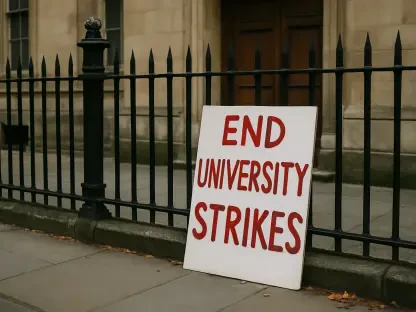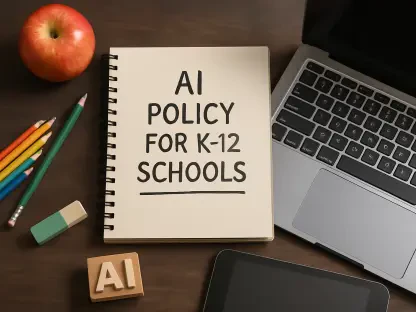In a landscape where education policy and civil rights intersect with intense debate, a recent Supreme Court decision has emerged as a critical influence on the treatment of transgender students in public schools. The U.S. v. Skrmetti ruling, originally centered on gender-affirming medical care for minors, has been repurposed by the U.S. Department of Education under the Trump administration to redefine the scope of Title IX protections. This decision, which upheld a Tennessee law banning certain medical treatments for transgender youth, draws a sharp line between “transgender identification” and “biological sex.” Though it did not address educational settings, its application to school policies on sports and facilities access has ignited a firestorm of legal and ethical questions. The implications ripple through school districts, leaving administrators, educators, and families grappling with how federal law interprets transgender rights in education today.
This development is more than a singular legal maneuver; it reflects a deeper struggle over the interpretation of civil rights laws in a politically charged environment. The Department of Education’s Office for Civil Rights (OCR) has cited Skrmetti to argue that Title IX does not shield transgender students from exclusion based on gender identity, a stance that challenges previous understandings of the law. As this policy shift unfolds, it underscores the tension between federal directives and the day-to-day realities faced by schools. The broader question looms: how far can a ruling unrelated to education stretch to impact the lives of students navigating their identities in school settings?
Legal Interpretations and Policy Shifts
Skrmetti’s Reach into Education Policy
The Trump administration’s use of the U.S. v. Skrmetti decision to shape Title IX enforcement has introduced a contentious framework for addressing transgender students’ rights. Specifically, the Department of Education has leaned on the ruling’s distinction between transgender identity and biological sex to assert that Title IX does not mandate access to sports teams or facilities aligned with a student’s gender identity. This interpretation pivots on the idea that the law, enacted to prevent sex-based discrimination, does not inherently cover gender identity as a protected category. While Skrmetti focused on medical care restrictions, its citation in OCR investigations signals a deliberate effort to apply its logic to educational contexts, despite the lack of direct precedent. This move has left many legal scholars questioning whether such an application oversteps the ruling’s original intent, creating a ripple effect of uncertainty across school policies nationwide.
Beyond the immediate policy implications, the application of Skrmetti reveals a strategic choice to narrow the scope of federal protections under Title IX. The administration contends that the Supreme Court’s language on the “immutability” of biological sex provides a clear basis for exclusionary practices, effectively sidelining transgender students from equal participation. Critics argue this interpretation sidesteps the unresolved legal question of whether discrimination based on gender identity constitutes sex discrimination under Title IX. As school districts receive mixed signals from federal authorities, the gap between Skrmetti’s medical focus and its current use in education policy becomes a focal point of debate. This disconnect highlights the challenges of adapting judicial rulings to contexts far removed from their original scope, leaving educators in a precarious position as they navigate compliance.
Historical Patterns of Legal Adaptation
Examining past administrations offers insight into how Supreme Court rulings are often molded to fit educational policy agendas, with Skrmetti being the latest example. During the Biden administration, the Bostock v. Clayton County decision—a landmark 2020 ruling that protected LGBTQ+ individuals from workplace discrimination under Title VII—was extended to argue for transgender student protections under Title IX. This approach aimed to broaden the law’s reach, ensuring schools provided inclusive environments. Though Bostock was rooted in employment law, its application to education set a precedent for interpreting civil rights statutes expansively. Such historical parallels show that leveraging judicial decisions beyond their initial context is not a new tactic but a recurring strategy employed across political spectrums to influence how schools address sensitive social issues.
The current reliance on Skrmetti by the Trump administration mirrors this pattern, albeit with a restrictive bent aimed at limiting transgender access. Unlike the Biden era’s formal guidance to schools, the current approach embeds Skrmetti-based arguments within OCR investigation outcomes, often leaving districts without transparent directives. This shift in method underscores a key difference: while both administrations stretched legal precedents, the manner and intent vary significantly. The back-and-forth between expansive and restrictive interpretations illustrates a broader tug-of-war over Title IX’s purpose, with schools caught in the middle. As legal scholars note, this oscillation reflects deeper ideological divides, where education becomes a battleground for competing visions of civil rights, often at the expense of consistent policy for students and administrators.
Broader Civil Rights Enforcement Trends
Expanding the Scope of Judicial Leverage
The use of Skrmetti to redefine Title IX protections is not an isolated incident but part of a larger pattern in civil rights enforcement within education. The Trump administration has also turned to the 2023 SFFA v. Harvard ruling, which struck down race-conscious admissions in higher education, to challenge diversity, equity, and inclusion (DEI) initiatives in K-12 settings. Though SFFA focused on university admissions, its application to younger students suggests a concerted effort to curb policies perceived as overreaching in promoting equity. This parallel use of judicial decisions indicates a strategic agenda to reshape how civil rights laws are applied in schools, often prioritizing a narrow interpretation over broader inclusivity goals. The overlap between Skrmetti and SFFA applications points to a systemic approach that could redefine educational equity for years to come.
This broader trend of leveraging Supreme Court rulings extends beyond transgender issues, touching on multiple facets of civil rights in education. By invoking SFFA to question DEI programs, the administration signals a willingness to challenge long-standing efforts to address systemic inequalities, even when the legal basis for such challenges appears tenuous. This approach contrasts sharply with prior administrations that sought to expand protections through similar legal reinterpretations. The cumulative effect is a fragmented policy landscape where federal guidance often conflicts with state or local priorities, creating additional hurdles for schools. As these judicial interpretations pile up, the risk grows that education policy becomes less about student welfare and more about ideological victories, leaving vulnerable populations particularly exposed to fluctuating standards.
Expert Perspectives and School District Challenges
Navigating Uncertain Legal Waters
Amid the evolving application of Skrmetti to Title IX, experts urge caution rather than hasty policy shifts among school districts. Kayleigh Baker, an advisory board member for the Association of Title IX Administrators (ATIXA), emphasizes the importance of consulting local counsel and adhering to state laws over reacting solely to federal interpretations. This advice stems from the recognition that Skrmetti does not directly address educational discrimination under Title IX, leaving its relevance to schools open to debate. Districts find themselves in a bind, balancing federal signals against a patchwork of local regulations that may offer more or less protection to transgender students. Baker’s guidance reflects a broader sentiment that until clearer legal precedents emerge, schools should prioritize localized decision-making to avoid potential missteps in an ambiguous legal climate.
The uncertainty fueled by Skrmetti’s application also raises practical concerns for school administrators tasked with implementing fair policies. Without definitive federal guidance, many districts struggle to determine whether compliance with OCR’s stance could conflict with state anti-discrimination laws that protect transgender students. This legal gray area often results in inconsistent policies across regions, with some schools maintaining inclusive practices while others adopt restrictive measures based on federal cues. The lack of uniformity exacerbates challenges for transgender students, who may face varying levels of access to sports and facilities depending on their location. As experts like Baker highlight, the current landscape demands a cautious, case-by-case approach, underscoring the need for schools to lean on legal advisors to navigate this complex terrain without compromising student rights.
Looking Ahead to Judicial Resolution
The ambiguity surrounding Title IX’s application to transgender rights is unlikely to persist indefinitely, with upcoming Supreme Court cases on athletic participation poised to offer much-needed clarity. These cases, expected to address whether transgender students can compete in sports aligned with their gender identity, could establish a national standard that resolves years of policy oscillation between administrations. For now, the reliance on Skrmetti by the OCR serves as a temporary framework, but its limitations are evident in the absence of direct relevance to education law. School leaders and legal experts alike anticipate that a definitive ruling will shift the focus from interpretive disputes to actionable mandates, potentially stabilizing how Title IX is enforced in relation to transgender students across the country.
Until such clarity arrives, the challenges for school districts remain significant, as they must reconcile competing legal signals with the immediate needs of their students. The prospect of future Supreme Court decisions offers a glimmer of hope for resolution, yet it also underscores the prolonged uncertainty that has defined this issue. Districts are encouraged to prepare for potential shifts by fostering dialogue with stakeholders and ensuring policies remain flexible enough to adapt to new legal standards. The broader impact on transgender students hangs in the balance, with access to equitable opportunities often dependent on judicial outcomes beyond their control. As the legal timeline unfolds, the focus must remain on safeguarding student well-being amidst these evolving interpretations of civil rights law.
Reflecting on a Path Forward
Looking back, the Skrmetti case stood as a pivotal moment that reshaped the discourse around Title IX and transgender student rights, revealing the deep politicization of education policy. Its application by the Department of Education under the Trump administration marked a restrictive turn, contrasting sharply with prior expansive efforts. As debates unfolded, the impact on schools and students became a testament to the challenges of aligning judicial rulings with educational realities. Moving forward, the path to resolution lies in fostering collaboration between federal, state, and local entities to create interim guidelines that prioritize student equity. Engaging legal experts and community voices will be crucial in bridging gaps until the Supreme Court provides definitive clarity. Ultimately, the focus must shift toward sustainable policies that protect all students, ensuring that legal interpretations serve as tools for inclusion rather than division.









